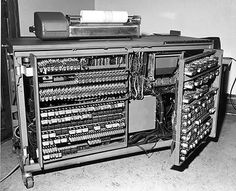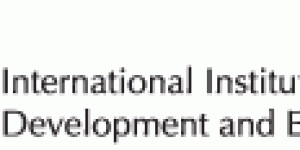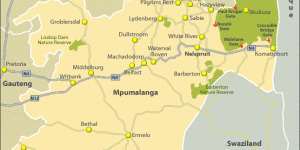IIDE Proceedings 2014 – Dealing With Complexity: Some Critical Reflections Upon Verkerk’s ‘Triple I Model’
No comments yetThe article provides critical reflections upon Dr. M. Verkerk’s ‘Triple I Model’ which aims to guide engineers in their work designing complex systems. The model suggests including stakeholders in the design process, in order to search for inherent values of the designed situation, and to design in an ideal-seeking mode. I do applaud the effort made as such as I do the mentioned three features of the model. However, I have also identified a set of challenges and needs for further development of the model and suggest some avenues for seeking support from the domain of systems thinking.
1. Introduction
The International Institute for Developmental Ethics (IIDE) hosts an Annual Working Conference, where a number of younger and more senior scholars meet to debate issues at the intersection of science, technology ethics and religion as sources for normativity, all related to societal challenges and changes. In past years, H. Dooyeweerd’s philosophical work has played a central role in inspiring and giving rise to many contributions and debates, yet by no means all. A recurring theme for dialogues and research cooperation has been the conceptions of systems thinking, in particular the use of systems methodologies in management.
At the 2014 Annual Working Conference (AWC) of IIDE, a special workshop entitled Dooyeweerdian Thinking meets Systems Thinking was organized, with the purpose of triggering new debate and opening up new avenues for future research. In view of this purpose Dr. Maarten Verkerk was invited to contribute. Dr Verkerk’s profile well matches the theme, as he is affiliated with the Dooyeweerdian school of thought in the Netherlands and is well acquainted with the domain of technology and management. At the workshop he presented the “Triple I Model” (hereafter referred to as 3IM), which aims to offer generic guidance for the design of complex systems. As a follow-up of the discussions at the workshop, I was asked by the chairperson of IIDE to write down my critical reflections upon Verkerk’s 3IM, which will be presented here.
The next section summarizes my understanding of the 3IM and my reflections will follow in section three. In brief, I sympathize with Dr. Verkerk’s efforts, while at the same time noticing some challenges; I suggest some steps towards solving these. The paper ends with some key conclusions to that end. Before moving to my assessment, however, I shall provide an account of my intellectual profile in order to make the reader aware of the kind of spectacles that shaped my assessment of Verkerk’s 3IM.
1.1 My Profile – the reference point of assessment
In several senses my profile is well suited to act as a base for an assessment of 3IM, as I perceive it. Given that the latter aims to guide designers of complex systems, where technology and the social aspects coexist, my broad intellectual and practical profile may offer a relevant reference point, yet not the only one; there is of course a need for several assessments that utilize different reference points.
I have been educated in a number of disciplines, ranging from mathematics, statistics and computer science, through economics, business administration and industrial organization, as well as psychology and sociology, and ending with philosophy, all in a varying range and depth. I have studied postmodern philosophy in France, analytical philosophy in Sweden and have been a keen reader, yet by no means exhaustively, of Dooyeweerd’s thought. I have also been a devoted student of systems science and its derivate systems thinking. I earned a doctorate in industrial organization and I have spent nearly fifteen years in managerial positions, ranging from those of operations analyst and management consultant to line manager and strategic development manager positions at a major international corporation. In all these contexts I have attempted to use my learnings, particularly systems thinking understood as guide to intervention into human, social, public, business and other affairs. As with Verkerk’s 3MI, I have also made some minor attempts to operationalize parts of Dooyeweerd’s thinking in terms of systems-oriented methodology for managerial practice, yet not very successfully.
When some years ago I was given an opportunity to return to the academic world as a full time scholar, I regarded it as a possibility to further extend my thinking but also to capitalize upon my experiences of management. Today I lead a small and young research group that focuses on an interdisciplinary exploration of digital businesses, understood as the use of information and communication technologies for the conduct of business activities.
2. The Triple I Model
A brief account of Verkerk’s Triple I Model, hereafter 3IM, will be provided here. To obtain a more comprehensive understanding of the 3IM, the reader is referred to Verkerk’s paper in the present conference proceedings, where it is summarized together with two illustrations of the model’s working. We will recall here only some of the key messages that 3IM attempts to put forward, with the aim of preparing the reader for the forthcoming discussion of the model’s key characteristics.
In the introduction to this paper, the reader is faced directly with the following challenge:
“Nowadays, engineers work in multidisciplinary teams and have to communicate with many stakeholders. They often lose the overview and do not understand anymore the ‘complexity’ of the functionalities of the integrated design. In practice, engineers work with simplified models resulting at best in inadequate solutions and at worst in big disasters. It is therefore of utmost importance that design tools are developed that do justice to the intricate relation between ‘man, technology, and society’.”
Shortly after that, Verkerk refers to a dialogue with an engineering colleague, who has expressed the challenge in the following manner:
“It is impossible for an engineer to take the ‘full complexity’ of these systems into account. I only have reduced models resulting in reduced designs that for their part result in sub-solutions and even wrong designs.”
Verkerk’s mission seems thus to be to provide engineers with guidance for nothing less than understanding the complexity of our perceptions and conceptions, particularly those complexities where various contemporary technologies meet man, organizations and society. More specifically Verkerk articulates this aspiration in the following way:
“to guide engineers in dealing with and unraveling the complexity of technological designs, identifying normative moments in designing new products, and understanding how values guide their creative design processes.”
While the presentation of the 3IM is very brief, and does not allow us space to detail the process for developing and testing that model, Verkerk still mentions some key traits of the development process. One central part of that process is that the philosophical work of H. Dooyeweerd is assumed as an intellectual foundation, from which normative guidelines were derived for directing design processes for technologies and their use. In all this, Verkerk’s central methodological assumption is that “philosophy would offer theories that could cope with ‘the complexity of these systems’ and that also could guarantee (a certain degree of) completeness.” In the conclusions, Verkerk says that 3IM: “guides engineers through the complexity of design processes by distinguishing three different perspectives: Identity, Interests, and Ideals.”
The 3IM offers a set of what is called tools for design of complex systems, where the central stipulation is that any such design process ought to investigate so-called ‘user practices’, i.e. the use of a specific technology, from three different perspectives:
* seeking the system’s Identity understood as its intrinsic value,
* seeking the system’s stakeholders and their Inclusion in the design process,
* seeking the system’s (hidden) Ideals that co-shape it.
In the discussion below, the focus is on the three I’s, as they dominate the presentation of 3IM offered by Verkerk.
3. Reflections
In this section I shall offer my critical reflections upon the proposed 3IM, as I have understood it. The reflections start with the actual challenge and aspirations assumed, then continue with an inspection of each of the three ‘I’s, respectively, and end with some minor methodological reflections.
3.1. The Aspiration
Clearly, the 3IM has assumed bold ambitions: to provide conceptual tools to enable the engineer to master complexity: human reality! A perusal of the brief exposé of 3IM provided brought to mind the early modernist thinkers who held similar ambitions by assuming that modern science constitutes the supreme tool to understand and control our reality. However, in the early 20th Century, K. Gödel (e.g. Gödel, 1992) showed that no formal statement, however simple or advanced, may ever be complete, rather it has to rest upon some basic beliefs, while Z. Freud (e.g. Mannoni, 1971) showed that man, by his very function, can never and will never be able to understand himself due to subconscious psyche operations (e.g. Ackoff, 1981). Paradoxically, advances made by science, that aspired to be man’s supreme tool in his conquest and control of reality, showed that science as such cannot even understand itself and cannot help us to understand completely the complexities we face.
Now, 3IM assumes a similar position to the early modernist thinkers, while replacing their scientific method as the supreme tool with philosophical conceptions, here Dooyeweerdian philosophy, as such a tool. Continental post-modern and post-structuralist thinkers, typically French (e.g. J. Derrida, M. Foucault, J.L Lyotard) made it their duty and honor to surface the many, often banal and bizarre, assumptions that the modernist mastering-reality program rests upon. This is not the place to review those attacks and identify their relevance to the 3IM position. Rather, we will briefly summarize that debate with its underlying questions: is it possible to master human reality? And if so, is that desirable? Clearly, the first question is empirical while the second is normative.
Addressing the first question only, our experiences of both natural catastrophes (e.g. the thunderstorms, tsunamis, earthquakes, and volcanic eruptions) and technological disasters (e.g. airplane and train crashes or malfunctioning medical equipment and drugs) show clearly that we cannot master reality, even though we have more technology than ever before to help us do that. While these are surface observations, a central message made by Dooyeweerd (1997, Vol. I.), with regard to the notion of religious ground motives, shows that the aspiration for mastering human reality is impossible, and results in the modernist nature-freedom ground motive. More specifically, this aspiration is based upon an unresolved secular antinomy, most visible in Kant’s heroic yet unsuccessful attempts, in his third critique, to bridge the abyss between theoretical and practical reasons. On the one hand it is assumed that our world is governed by natural laws, with underlying deterministic mechanisms, that give rise to regularities that scientific method can discover and that enable us to control reality (Kant’s first critique). On the other hand it is assumed that man is free to do what he wants, which makes him a responsible being, as it is stated that without freedom there is no meaning in responsibility (Kant’s second critique). However, what neither Kant’s third critique, nor any other attempts, is able to answer is this: how is it possible to be a free man in a fully deterministic world? Clearly, Dooyeweerd’s answer is that only God can control reality as He is Reality, which makes the Biblical ground-motive supreme, where God’s Law governs all reality.
In this sense, I think that the bold ambitions allocated to 3IM are neither possible nor compatible with its theoretical underpinnings in Dooyeweerdian philosophy. I would rather suggest here an adjustment to 3IM’s aspiration. Indeed, secular thinkers have also realized the impossibility of the master-reality aspiration. Two of the most prominent systems thinkers – C.W. Churchman and H.A. Simon – starting from very different meta-theoretical positions, respectively, and disagreeing on most issues (Ulrich, 1980) both arrive at the same position: that optimal solutions are not possible. Churchman (1968, 1971, 1979) displaces the optimal or comprehensive with the process of continuous and inclusive unfolding while Simon (e.g. 1956) goes from optimal to satisfying solutions; also a key message from the more recent so-called complexity science (e.g. Holland, 1988) is that complexity cannot be fully comprehended or mastered, at best the behavior of a complex system may be intelligible, not explainable. In a vein of thinking similar to that of Churchman and Simon, and also based upon Dooyeweerdian thinking as Verkerk’s 3MI, S. Strijbos (2006) has suggested the process of disclosure as a means for making our experiences intelligible, yet recognizing that we can never fully understand complexities nor control them. In this sense I interpret a Dooyeweerdian notion of disclosure as being part of reality, rather than its master, interacting with our contexts, learning and responding to their conditions rather than conquering them; in a modernist language it may be paralleled with ‘experimental learning’. Dooyeweerdian disclosure implies, as Strijbos articulates it, that we unconditionally start with a normative position, we cannot escape that, and we cannot be neutral. These assumed norms necessarily guide us in whatever design we undertake: this applies also to Verkerk. Therefore it is crucial to be critically self-reflective upon our own presuppositions. In this manner, I suggest that 3IM be further developed in line with Strijbos’ proposed approach, and the following reflections will further motivate this suggestion.
3.2. Inclusion
Now I move these reflections to the three main precepts of 3IM, starting with ‘Inclusion’. Verkerk tells us that it refers “to an approach in which the interests of the different stakeholders are identified and included in the design process”. This draws upon the contemporary notion of stakeholder management (ref), which assumes that by identifying all key actors that hold a stake, or an interest, in a given situation or system, we may address these stakes or interests and thereby reach a proper solution to the challenge at hand, as the aspiration is to make the identified stakeholders’ stakes satisfied in some not predefined sense. In this, Verkerk assumes that stakeholders may hold justified interests that ought to be met.
To start with, the very notion of inclusion as such is very welcome, as I see it, yet probably more challenging than ever before. Verkerk seems to draw heavily upon on Freeman’s (Freeman, 1983, 1984; Evans & Freeman, 1987; Freeman et al 2004; Freeman et al 2010) stakeholder management approach, which in turn attempts to further operationalize the works of I.I. Mitroff and R. Mason (1982) and I.I. Mitroff (1983), all these based upon C.W. Churchman’s (1968, 1979) ground breaking work in his notion of the ‘systems approach’. Grounded in American pragmatism philosophy, particularly its epistemology, Churchman propagated for an inclusive process of seemingly never ending unfolding. He struggled particularly with the challenge of setting a system’s boundaries, i.e. what and who should be included or not in the conception of a faced situation. In this, Churchman was careful to notice all the actors that are affected by a system. Unfortunately, the various operationalizations of Churchman’s thinking, such as those within contemporary stakeholder management approaches, missed a central challenge, and committed the so-called open system fallacy (e.g. Ulrich, 1983: 299). The open systems fallacy refers to the mistake of regarding a social entity, such as a family or an organization, as a biological organism that has a system’s border open for interactions with its environment. This means that the focus is set only on how a social system is influenced or affected by external conditions such as actors; this is so because biological systems do so. However all those actors not in a position to influence the situation of concern yet influenced by it, the so-called victims, are ignored in the contemporary stakeholder management approaches; this is so because an open biological system – such as a flower –also ignores those that it affects yet do not affect it. While the conventional stakeholder management approaches of the 1990’s (Donaldson, 1995; Agle, et al, 1999) typically committed the open system fallacy (which well manifests their utilitarian moral) the more recent trend of the so-called Corporate Social Responsibility (CSR) programs makes an attempt to cover the gap of the affected not affecting (e.g. Freeman & Velamuri, 2006) – of course the critics are quick to remark that the whole business of CSR is just a more sophisticated marketing tool aimed at influencing those that affect (e.g. customers) by creating an image that the organization cares about the victims (e.g. Siegel 2009).
When including the victims, however, stakeholder management offers a promise. Another student of Churchman, later his close colleague, R.L. Ackoff (e.g. 1981), articulated the need for inclusion very clearly in two terms: epistemological and moral. Epistemologically, stakeholders must be included as they have knowledge of the situation addressed, as it is assumed that knowledge is necessary, yet not sufficient, to plan for a proper dealing with a complex situation. Morally, stakeholder inclusion is a must in contemporary democratic and liberal societies to secure approval and commitment by those that the plans affects those that are planned for – we should thus avoid planning for others in sensitive matters, and ask the affected to plan for themselves (ibid.). In addition, Checkland’s (Checkland & Scholes, 1990) unique systems approach, much influenced by Churchman’s work, the Soft Systems Methodology proclaims, yet loosely, an inclusive process. However, it is without doubt one of Churchman’s last students, W. Ulrich who was most successful in making a breakthrough in terms of methodological support guiding a process of inclusion, with his ‘Critical Systems Heuristics’ (Ulrich, 1983, 1987; Ulrich & Reynolds, 2010). In this he provides guidance for the kind of actors to be included in the planning process, and also the kinds of questions that each actor is to address. As far as we know, this is the state of the art of stakeholder management, and we recommend that Verkerk further inform his 3MI.
However, stakeholder inclusion is only one side of the underlying challenge for all planning or design; the other is about how we decide what is right or wrong, whether a proposed plan or design, in Verkerk’s terms, is right. Even if we succeed in a situation where all stakeholders are included on even terms, and they succeed in reaching a consensus or at least an accommodation with regard to the content of a design: how do we know that that is right? To be sure, Ulrich’s Critical Systems Heuristics, heavily based on Habermas’ notion of ideal speech situation, submits the question of right and wrong, to the outcome of a communication process of the affected, which is declared as a democratic solution. This quest for inter-subjectivity is probably the position that holds the strongest explicit social contract in the western democracies, yet is by no means the only way of dealing with the moral question of right and wrong, as history shows – beside the fact that in challenging situations we often do not reach an accommodation, as shown by the Israel-Palestine conflict for example. Verkerk’s probably most interesting contribution, in the context of 3IM, lies in how he suggests dealing with this question. He addressed it in terms of the ‘Identity’ component in his model; it is thus now timely to move our attention to it.
3.3. The Identity
Verkerk states briefly that Identity of a system, or a situation where it is to be used, is about “the specific character of the primary process of the user practice”. Clearly, this position does not submit itself to the now-popular inter-subjectivity or democratic notion where what-is-right-or-wrong equals the outcome of an ideal speech situation of those affected. Rather, 3MI holds that reality as such has some intrinsic norms that are beyond such a process of open communication of stakeholders, even though that process may be instrumental in identifying those inherent standards. Verkerk explains further that every entity has a qualifying function that expresses its inherent and dominating norms, which he bases upon Dooyeweerd’s (1977, vol. III) notion of individuality structures, their aspects and the unique aspectual qualifying function of the entity. Verkerk illustrates this with the case of a smart grid for power supply, where he concludes that when designing such a system for supplying power to households it has to be qualified by social norms (i.e. social intercourse) as a household is qualified socially while when the smart grid is designed to supply companies with power it has to be qualified economically as a firm is qualified in such terms.
This proposal to assume the Dooyeweerdian notion of qualifying function as a guide for normativity of entities is clearly not without strong appeal, yet it has exposed several challenges. One is the fact that Dooyeweerdian philosophy is not necessarily accepted, even within philosophical contexts, being sometimes disregarded as obscure continental ‘magic’ (e.g. Chaplin, 2011; Friessen, 2009; Strauss, 2009; Wolterstorff, 1983); of course, this does not imply that Dooyeweerd’s message is without relevance, rather that its message may be complicated or unacceptable. Secondly, the various debates about the clarity of the idea of aspects, what it is and is not, and the related ideas such as founding, leading and qualifying functions (e.g. Basden, 2007.) suggest that this proposal is either not well worked out conceptually or that it may address only part of the complexities of our reality. Several previous attempts at employing this kind of thinking have shown conceptual challenges, for instance what if an artefact is designed for one kind of use and then is used successfully in a totally different manner (e.g. Bergvall-Kåreborn & Grahn, 1996).
While sympathizing with the issues mentioned above, and accepting this proposal of qualifying function as a representative for inherent norms, one may ask a number of challenging questions (e.g. Bergvall-Kåreborn & Grahn, 1996; Eriksson, 2001) such as: what is the nature of a planning or design process that can identify the qualifying function of an entity and its context? How can we be sure that we have identified the right function? Is the process of qualifying function identification not dependent upon the actors involved in the design? Does that mean that we always have to include all actor categories? And then, if we have succeeded in identifying a candidate for the right qualifying function, what does that mean for the design outcome, i.e. how should the designed entity be influenced by its qualifying function, if so, how and why? For instance, what is the qualifying function of a mobile phone? Is it communicative, social, analytical, or even historic?
Finally, the analytical philosopher would probably remark: if a home is defined in terms of a specific function, say a social function, there is no logical implication to makes us conclude that its smart grid should also follow these norms, as Verkerk proposes:
“Consequently, the design of smart grids for households have to be disclosed by the values mutual support and living as a community, and the design of smart grids for industrial enterprises by an enterprise by values like customer satisfaction, profit and sustainability. “
I regard the notion of inherent norms as the most interesting yet challenging part of Verkerk’s proposal. It potentially offers a third way in the dualism between the postmodern relativism (or constructivist) position and the modernist metaphysical contract imposed by those in power, typically aiming to preserve their power-positions. The challenge here is to manifest the practical feasibility of this approach.
3.4. Ideals
We have now arrived at the third and final component of the 3I-model, the stipulation that the design process with its participating stakeholders ought to idealize the designed system or situation, which is assumed to be a direct implication of the value sets held by the designing stakeholders.
As with the proposed inclusion of stakeholders, the stipulation to idealize is by no means new. It is well known within systems thinking and emerged there when C.W. Churchman operationalized his teacher’s philosophy; i.e. Singer’s (1959) so-called Teleological Experimentalism, a dialect of American pragmatisms. This strongly epistemologically oriented argument observes that knowledge by necessity is an imperative assentation, e.g. ‘this table is white’, however this also is necessarily an ideal statement, Singer observes, as we may never know for sure, which means that we inherently operate with ideals when we assert or stipulate knowledge. Churchman developed this observation philosophically; however it was up to his two students, R.L. Ackoff and W. Ulrich to operationalize it, in the context of their respective systems methodology that offers a guide for the ideal-seeking design process. While both Ackoff and Ulrich succeeded well in utilizing the ideal-seeking mechanism it is probably Ackoff who offers the most elaborate characterization of the ideal-seeking design process, (something that is beyond the scope of this discussion).
Interestingly, Verkerk’s proposal for ideal-seeking design is not at all based upon an epistemological argument but derived from Dooyeweerd’s notion of religious ground motives, which detailed that all human beings are unconditionally creedal or religious beings, meaning that we all operate from some very fundamental beliefs and convictions. In this, Verkerk says that our value set guides what we believe is desired, which in turn may be further developed into ideals. In this sense we regard the two arguments – epistemological and religious – as complementary and supporting each other in promoting an ideal-seeking design process. Therefore, I am very positive to the idea of ideal-seeking designs that are not only motivated by epistemological challenges but also by humans’ basic convictions. In this I believe that Verkerk may benefit from both Ackoff and Ulrich with regard to further operationalization of the specification for ideal-seeking design process. Secondly, and unlike the epistemologically grounded idealization, Verkerk would also need to suggest how to deal with situations when stakeholders are included with strongly contrasting ground motives – e.g. the biblical versus the humanist positions or more concretely, Israel versus Palestine. I wish to anticipate here that the identity of a situation, with its inherent norms, could potentially operate as a common denominator.
3.5 Methodological Reflections
Finally, I should like to make a brief reflection upon the actual procedure for the way in which 3IM appears to have been formulated or developed. We are prevented from providing more comprehensive reflections as Verkerk’s presentation of 3IM is very brief.
I am pleased to observe that Verkerk starts with real life concerns, rather than a purely theoretical focus, as the former may constitute a compass needle for the further development of his approach as well as a point of reference for investigating the feasibility of the proposed approach. I am also very pleased that 3IM seems to have been developed in a kind of action research setting, where concrete situations of engineering and development constitute the laboratory or workbench for the development of various 3IM-related proposals. In this sense, to be taken more seriously, 3MI would need to show its practical feasibility more openly, i.e. what concrete difference does it make to follow 3IM stipulations when designing complex systems? Currently we do not know whether there are any concrete benefits or if 3IM is a purely conceptual exercise. For this, I wish to recommend P. Checkland’s (Checkland 1981; Checkland & Holwell 1998) now somewhat classical approach for the development of a methodology aimed to guide real life intervention. This is the so-called Framework of Ideals, to be tested on an Area of Interest by means of a Methodology (FMA-framework). Checkland was educated in the natural science methodology, and observed that we may not seek repeatability in the social context of action research; rather that we should provide a recoverable account that is transparent in terms of its process of formulation and test for its aimed feasibility (ibid.)
Finally, I wish to reflect upon the intellectual foundation assumed by 3MI. I sympathize with Verkerk’s choice of Dooyeweerd’s contribution as such a foundation. However, Verkerk needs to clearly justify his choice, particularly as various quarters hold that no successful operationalization of Dooyeweerd’s contribution has succeeded so far. Secondly, it is clear that Verkerk assumes that the most general of all disciplines, philosophy, is capable of providing practical guidance for how to intervene in social affairs. Many would say that the various sciences are much more capable of providing us with such a detailed guidance, thus Verkerk needs to justify this position as well.
4. Conclusions
I am sympathetic toward Dr. M. Verkerk and his colleagues’ overall attempt at formulating some conceptual guidelines for the design of complex situations, where contemporary technology is to be allocated into a social context. Such guidelines are much needed coexistence where we may harvest the benefits of technological advancement without exposure to their potential harms.
In my assessment of the proposed 3I-model, I have pointed out some of its challenges but also its promises, as I understand. One is its ambition to provide control of reality; this seems neither possible nor is it compatible with the theoretical underpinnings assumed by the model, an alternative is to seek a process of ‘disclosure’ as suggested by Strijbos (2006). Secondly, I am fully aligned with the promotion for an inclusion of stakeholders, yet I warn for the common open systems fallacy. Thirdly, I also wish to support the idea of idealization; particularly as it is founded in Verkerk’s notion on creedal commitments rather than in epistemological elaborations. Next, the most interesting characteristic of the 3I-model, in my opinion, is its quest for the inherent normativity of entities and their contexts. I find this fully aligned with the Dooyeweerdian foundations assumed, and also with S. Strijbos’ proposed disclosure that is also based upon Dooyeweerdian reading. This may potentially provide an alternative to the contemporary ideal communication and the modernist metaphysical commitments.
In all these opportunities I see that the proposed 3MI is in great need of explicit operationalization to do what is proposed in a design situation – this is indeed a core element of any methodology aimed to guide design (e.g. Checkland & Holwell, 1998). In this, I have suggested repeatedly that 3MI may benefit from the developments and learnings made over several decades by systems thinkers, within such themes as stakeholder inclusion (e.g. Ulrich, 1987) , idealization (e.g. Ackoff, 1981), and also the handling of pluralism (Checkland, 1981). Finally, the whole process of formulation and testing of the 3MI requires transparency of its recoverability and feasibility, instead of its current ‘black magic’ approach.
Again, I wish to both congratulate Verkerk and his team on their undertaking so far and also to urge them to strive to further develop their approach, which is probably still in its infancy…
NOTE
i. Darek M. Haftor – Linnaeus University, Växjö, Sweden, darek.haftor@lnu.se.
REFERENCES
Ackoff, R.L. (1981). Creating the Corporate Future. Wiley, New York.
Agle, B.R., Mitchell, R.K. and Sonnenfeld, J.A. (1999): Who matters to CEOs? An investigation of stakeholders’ attributes and salience, corporate performance and CEO values. Academy of Management Journal, Vol. 42 No. 5, pp. 507-525.
Basden, A. (2007). Philosophical Frameworks for Understanding Information Systems. Hershey, PA: IGI Global.
Bergvall-Kåreborn, B, Grahn, A. (1996). Multi-modal thinking in soft systems methodology’s rich pictures. World Futures, Vol. 47, Iss. 1: 79-92.
Chaplin, J. (2011). Herman Dooyeweerd: Christian Philosopher of State and Civil Society. Notre Dame: University of Notre Dame Press.
Checkland, P.B. (1981). Systems Thinking, Systems Practice. Wiley, New York.
Checkland, P.B., Scholes, J. (1990). Soft Systems Methodology in Action. Wiley, New York.
Checkland, P.B., Holwell, S. (1998). Action Research: Its Nature and Validity. Systemic Practice and Action Research. Vol.11, No.1, pp. 9-21.
Churchman, C.W. (1968). The Systems Approach, Delacorte Press, New York.
Churchman, C.W. (1971). The design of inquiring systems: basic concepts and organization. Basic Books, Inc. Publ. New York
Churchman, C.W. (1979). The Systems Approach and Its Enemies, Basic Books, New York.
Donaldson, T., Preston, L. (1995): The stakeholder theory of the corporation: Concepts, evidence, and implications. Academy of Management Review, 20(1), 65–91.
Dooyeweerd, Herman (1997) [1955], A New Critique of Theoretical Thought, I-IV. The Edwin Mellen.
Eriksson, D.M. (2001). Multimodal investigation of a business process and information system re-design: a post-implementation case study. Systems Research and Behavioral Sciences, Vol. 18, No. 2, pp. 181-196.
Evan, W.M., Freeman, R.E. (1987): A stakeholder theory of the modern corporation: Kantian capitalism. In: Beauchamp, T.L., Bowie, N.E. (Hg.): Ethical theory and business. Englewood Cliffs: Prentice Hall, 97-106.
Freeman, R. E., Reed D. L. (1983). Stockholders and Stakeholders: A New Perspective on Corporate Governance. California Management Review 25(3), 88–106.
Freeman, R. E. (1984). Strategic management: A stakeholder approach. Boston: Pitman
Freeman, R. E., Wicks, A. C., Parmar, B. (2004). Stakeholder theory and ‘‘The corporate objective revisited’’. Organization Science, 15(3), 364–369.
Freeman, R. E., Velamuri, S. R. (2006). A new approach to CSR: Company stakeholder responsibility. In A. Kakabadse M. Morsing (Eds.). Corporate social responsibility (pp. 9–23). Hampshire: Palgrave Macmillan.
Freeman, R. E., Harrison, J. S., Wicks, A. C., Parmar, B. L., De Colle, S. (2010). Stakeholder theory. The state of the art. Cambridge: Cambridge University Press.
Friessen, G. (2009). Dr. J. Glenn Friesen 95 Theses on Herman Dooyeweerd, Philosophia Reformata 74, 78-104.
Gödel, K., 1992. On Formally Undecidable Propositions of Principia Mathematica and Related Systems, tr. B. Meltze, Dover, reprint of the 1962 Basic Books edition.
Holland, J.H. (1988). Emergence: From Chaos to Order. Redwood City, California: Addison-Wesley
Mannoni, O. (1971). Freud: The Theory of the Unconscious, London: NLB 1971
Mason, R. & Mitroff , I. 1982. Challenging strategic assumption. New York: Wiley.
Mitroff, I.I. (1983). Stakeholders of the Organizational Mind. San Francisco: J-B- Publ.
Siegel, D. S. (2009). Green Management Matters Only If It Yields More Green: An Economic/Strategic Perspective, vol. 23, iss.3. Academy of Management Perspectives. pp. 5–16.
Simon, H. A. (1956). “Rational Choice and the Structure of the Environment”. Psychological Review 63 (2): 129–138.
Singer, E.A., Jr., (1959). Experience and Reflection. Univ. of Pennsylvania Press, Philadelphia.
Strauss, D.F.M. (2009). Philosophy: Discipline of the Disciplines, Paideia Press, Grand Rapids, MI, USA.
Strijbos, S. (2006). Towards a ‘Disclosive Systems Thinking’. In Ch. 14. Strijbos, S., Basden A. eds. (2006). In: Search of an Integrative Vision for Technology. Springer, New York
Ulrich, W. (1980). The Metaphysics of Design: A Simon-Churchman “Debate”. Interfaces, Vol. 10, Iss. 2, 35-40.
Ulrich, W. (1983). Critical Heuristics of Social Planning: A New Approach to Practical Philosophy. Bern, Switzerland: Haupt. Pb. reprint ed. New York: Wiley, 1994.
Ulrich, W. (1987). Critical Heuristics of Social System Design. European Journal of Operation Research. 31: 276.
Ulrich, W., Reynolds, M. (2010). Critical Systems Heuristics. In: M. Reynolds and S. Holwell (eds.), Systems Approaches to Managing Change: A Practical Guide, London: Springer, in association with The Open University, Milton Keynes, UK, pp. 243-292.
Wolterstorff, N. (1983). Until Justice and Peace Embrace, Grand Rapids: Eerdmans.
You May Also Like
Comments
Leave a Reply










